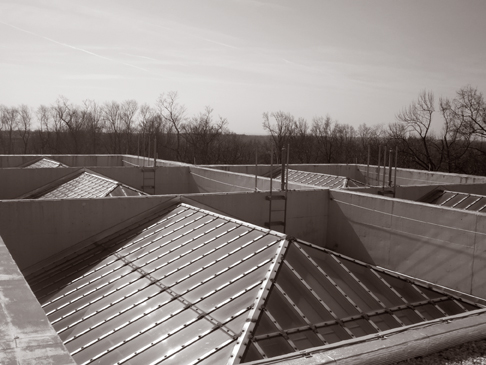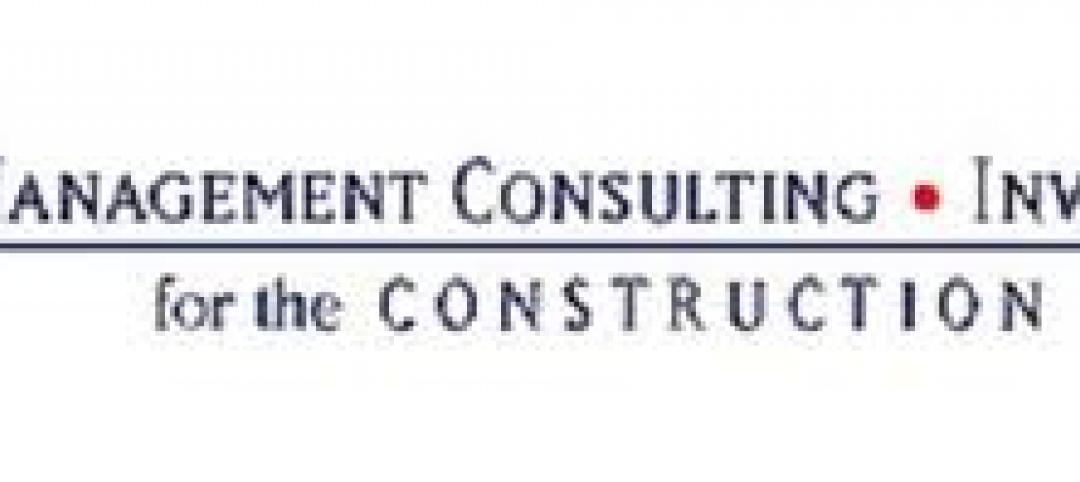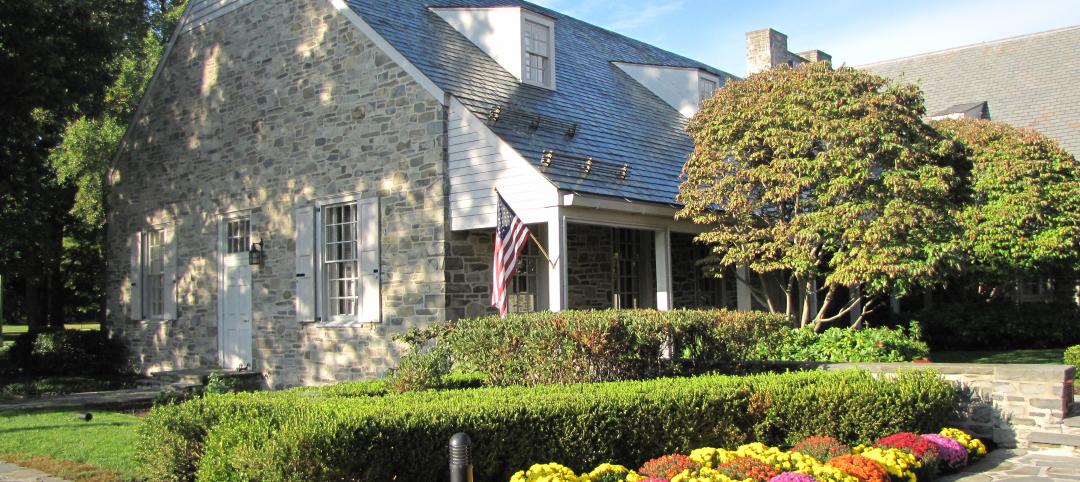Click here to download a PDF of Chapter 7 When Modern Becomes Historic: Preserving the Modernist Building Envelope
Click here to download a PDF of High-Performance Reconstructed Buildings: The 99% Solution, the 9th in a Series of White Papers on the Green Building Movement
A radical break from the architectural modes of the past, the Modern movement resulted in a half-century of bold new ideals, manifestos, and international collaborations. Beyond allegiance to a fixed architectural style, Modernism aimed to achieve purity of design by applying order, logic, reason, economics, and new technologies to a bold reimagination of space that is both organic and purposeful.
Shortly after the Modern movement began in the early 20th century, the field of historic preservation also started to emerge. In 1931, at the same time that Le Corbusier was drafting The Radiant City and Walter Gropius was leading the Bauhaus school, the First International Congress of Architects and Technicians of Historic Monuments adopted “The Athens Charter for the Restoration of Historic Monuments,” the founding set of formally adopted international principles in the field of historic preservation.
As contemporaries, Modernism and historic preservation make for strange bedfellows. In one sense, they are at cross-purposes, the one seeking to transcend tradition, the other looking to hold on to the past. As Modernist buildings age, however, the two fields of necessity must draw closer together. To protect significant Modern structures from oblivion, Building Teams and building owners of today are faced with the paradoxical task of applying historic preservation principles to self-proclaimed ahistorical architecture.
Learning Objectives
Based on the information presented in this chapter,
you should be able to:1. Identify common threats to Modern buildings - thermal shrinkage, freeze-thaw cycling, water infiltration - and explain how changes in stylistic perception or program requirements can place Modern structures at risk.
2. Establish an appropriate scope for preservation of a Modern structure based on principles consistent with historic preservation standards, the values of the Modern movement, and life cycle assessment (LCA) as a key component of sustainability.
3. Evaluate repair and replacement options for aging glass curtain walls and for the restoration of exposed concrete façades to enable the preservation and reuse of existing facilities.
4. Implement energy upgrades for Modern building envelopes that balance preservation with energy conservation.
IDENTIFYING THREATS TO MODERN BUILDINGS
Changes in program. Modern architecture tended to envision the building as a machine or tool, drawing inspiration from the forms of grain elevators, steamships, and automobiles. Yet just as it is difficult to imagine using antiquated machines in any sense beyond novelty, it is hard to conceive of the unassisted endurance of Modern buildings once they cease to meet the functions for which they were designed. Le Corbusier may have been eerily prophetic when he argued that “it is not right … that we should waste our energy, our health and our courage because of a bad tool; it must be thrown away and replaced” (Towards a New Architecture, 1931). Without protection of aging Modern buildings, this may prove to be the case.
Adaptive reuse of a building or district can be effective as a partner in conservation. New York’s Cast Iron District in SoHo, an early example of adaptive reuse, evolved from a rundown industrial wasteland to a hub of artistic activity thanks to the outcries of preservationists. However, voluntary adaptive reuse is subject to the current postmodern zeitgeist, or “spirit of the age,” and may fall into disfavor as styles and attitudes change. Without preservation ordinances that apply to Modern buildings, the impetus to repurpose existing structures is left to the whims of the moment.
Changes in stylistic perception. A major threat faced by buildings of any era is the perception of their style in the period that follows. Although today we view the cast iron façades of SoHo as cherished architectural landmarks, many people living a generation after their construction viewed the buildings with such disregard that they proposed razing them to build a highway. The transitory stage between “fresh and contemporary” and “vintage classic” is simply “out of date.” The perceptions of one time period with respect to the previous one are often reactionary and, to some extent, negative.
In this sense, the Modern movement did itself few favors. Given Modernism’s radical break from the artistic styles that preceded it, it is not surprising that, having called into question our perceptions of historical value, Modern buildings have rendered their own endurance uncertain.
Natural forces. One benefit of pre-Modern construction is that the materials, such as brick and stone, tend to be durable enough to last for centuries. In contrast, buildings constructed in the mid- to late-20th century commonly used materials and construction techniques that are inherently susceptible to long-term degradation due to corrosion, rot, mold, and UV radiation.
Redundancy in construction, such as multi-wythe bearing walls and massive pillars and columns, affords older buildings greater resiliency than their Modern counterparts. As developments in material technology and construction methods permitted ever shorter construction schedules, the ability of the final product to withstand decades of exposure to the elements was often compromised in service to expediency.
CHALLENGE IN ESTABLISHING PRIORITIES FOR PRESERVATION
In The New Era (1930), Mies van der Rohe argued that the industrialization of the Modern age would progress blindly, “irrespective of our ‘yes’ or ‘no,’” unless new values guided its development. He acknowledged that the conditions surrounding Modern architecture have inertia of their own and would stumble ahead aimlessly unless directed by these new standards. For the buildings of Mies’s era, no longer new, conservationists and regulating bodies face the challenge of establishing preservation directives specific to Modern buildings, lest their fate likewise be left to its own blind momentum.
Selecting Modern buildings for landmark or historic designation poses new challenges, as the number of buildings far exceeds that of earlier architectural periods. The materials and techniques of Modern architecture allowed for rapid and prolific construction, which not only helped achieve the social ideals of the movement, but also resulted in a historically unprecedented volume of new structures. To give a sense of scale to this, consider that there are approximately 300 surviving works by Frank Lloyd Wright alone. With many Modernist structures now reaching the age threshold for protection by historic and landmark commissions, the number of buildings and sites classified as Modern that are listed on the National Register of Historic Places is approaching 600—and counting. Still more are listed on state and local registries.
The challenge, then, is sorting through the scores of Modern buildings and selecting works of sufficient value for conservation. One independent organization, Docomomo International (DOcumentation and COnservation of buildings, sites and neighborhoods of the MOdern MOvement: www.docomomo.com), has undertaken the task of establishing criteria specific to the Modern movement. Unlike traditional standards for preservation, which emphasize building age, historic events, and noteworthy people, Docomomo’s criteria for Modern buildings recognize technological merit, social import, artistic and aesthetic merit, canonic merit, referential value, and integrity. Docomomo and similar organizations strive to align selection criteria with the movement behind the buildings’ genesis.
DECISION MAKING: ESTABLISHING AN APPROPRIATE PRESERVATION SCOPE
With the increasing number of Modern buildings protected by landmark registries and watchdog groups, the community has begun to acknowledge the value of these structures—and their fragility. While designation by a historic commission can protect a Modern building from the threats of egregious mistreatment or demolition, landmark status does little to safeguard against the more insidious forces of time, weather, and inept repairs.
The authoritative guide for remedial work in a historical context is the Secretary of the Interior’s Standards for the Treatment of Historic Properties (1995), which provides guidelines for historic building preservation, rehabilitation, restoration, and reconstruction. Standards recommends selecting an appropriate scope of treatment based on four considerations: 1) relative importance in history, 2) physical condition, 3) proposed use, and 4) mandated code requirements.
As noted by Theodore H.M. Proudon, FAIA, in Preservation of Modern Architecture (2008), these standards, which were developed for pre-Modern historic buildings, center on preserving aesthetic value and historic fabric. For Modern structures, where the source of the building’s value may be only tangentially related to particular materials or construction methods, the traditional emphasis on historic accuracy in preservation may not necessarily be appropriate.
For instance, consider what is lost when we compromise function and efficiency for the sake of historical correctness in a building significant primarily for its function and efficiency. If a building’s import rests more on its social impact than on the historic fabric of its curtain wall, rigid adherence to the use of original materials in conservation may miss the point of what is being preserved.
TECHNICAL CHALLENGES TO PRESERVING MODERN BUILDINGS
Aging glazed curtain walls: Repair or replace? As curtain walls age, exposure to ultraviolet radiation degrades gaskets and seals, allowing water to enter the wall. Fatigue due to cyclic loading may also cause seals to wear and fail. The resultant leaks not only damage interior finishes; they can lead to moisture-related deterioration within the wall assembly. Older curtain walls also tend to have poor insulating properties, which can lead to condensation and fogging at interior glazing surfaces and frames.
Additionally, some earlier curtain walls were constructed with carbon steel components rather than aluminum, bronze, or stainless steel, which can lead to corrosion and additional damage over the course of the curtain wall’s life cycle.
Stick-built and field-assembled, most Modern era glass-and-metal curtain walls were constructed using components and framing profiles that are no longer available today, requiring custom fabrication of replacement parts. The cost of custom framing and glass can be considerable and may render the option of small-scale and partial replacement of a deteriorated curtain wall infeasible.
Standards for curtain wall construction have also evolved since they were first popularized in the mid-20th century. For example, early curtain wall anchors lacked the locking washers that are commonplace today. As the building vibrates in response to wind and seismic forces, anchor nuts can back off over time, leading to unstable curtain wall assemblies. Newer structures were built with this tendency in mind, but for many mid-20th-century buildings, anchorage failure has become a major rehabilitation concern.
The two available treatment options are to repair the aging curtain wall system in place, or to replace it. Repair has the advantage, generally speaking, of being less expensive, and it leaves the majority of the historic fabric intact. However, while repair methods may resolve some issues, such as water and air infiltration or anchorage failure, they are less successful at addressing other problems like condensation or poor energy performance.
Repairs often rely heavily on field-applied waterproofing sealants to provide a moisture barrier. To be successful, this strategy requires a high level of consistency in workmanship. In reality, sealants are applied in the field under varied conditions, often from unsteady platforms and suspended scaffolds.
Hazardous Materials in Modern Buildings
One major challenge in the treatment of buildings constructed in the Modern era is the presence of hazardous materials. Asbestos, polychlorinated biphenyls (PCBs), and lead-based paints were commonly used in construction materials during the mid-20th century. Because abatement is a delicate, complicated, potentially disruptive, and often expensive task, it needs to be carefully weighed into the preservation decision-making process. Before selecting a treatment strategy, consider how the potential presence of toxic chemicals in older building materials may impact the scope and cost of planned work.
Gasket replacement may be possible for some systems, but not all. Field-applied restoration to finishes is also a possibility, but in the past it has a limited track record for durability and long-term success. Consider, too, that while a repaired curtain wall system may meet structural requirements of the codes in effect at the time of construction, new codes are likely to be more stringent. Landmarked or registered historic buildings may be exempt from meeting updated codes, but their owners may not wish to take a chance on a curtain wall that may be less structurally stable than its newer counterparts.
Replacement can address many of these concerns, including structural integrity and energy efficiency. Although often more expensive than repairing existing systems, curtain wall replacement can incorporate rainscreen principles, managing incidental moisture without relying on an absolute water barrier. Add to this the higher performance of newer factory-applied finishes, and replacement systems offer decreased reliance on field workmanship—and less chance of human error.
Where curtain wall replacement falls short is in the area of historic accuracy. Building codes and structural considerations for wind resistance and loading, among other factors, may preclude an exact replica of the original design. Frame profiles and materials have changed considerably over the past few decades, so it may not be possible to match the existing system without costly custom fabrication. For instance, many early curtain walls used steel frames, whereas most curtain walls of today are manufactured from aluminum.
The decision to repair or replace an ailing glazed curtain wall is a complicated one, and each building and situation is different. Given the availability of materials, the condition of the existing curtain wall, the history and extent of water infiltration problems, the structural integrity of the curtain wall assembly, and the rehabilitation budget, owners and their Building Teams must weigh the options and determine what best meets program requirements and preservation objectives.
Restoring exposed concrete façades. Counterpointing the airy steel-and-glass curtain walls of International Style and Mid-Century Modern architecture, Brutalist architects used exposed “raw” concrete, béton brut, as an aesthetic feature. Reinforced concrete is a durable material, but it does deteriorate after prolonged exposure to weather. Common causes of concrete cracking include:
• Curing shrinkage
• Thermal shrinkage
• Movement or restrained movement
• Settlement
• Freeze-thaw cycling
• Change in applied loads
Once cracks begin to form in the concrete surface, water is able to penetrate to embedded reinforcing steel, causing it to corrode. As the steel expands, it exerts pressure on the surrounding concrete, and pieces break away, or spall, admitting more water and perpetuating the cycle of deterioration.
Exposed concrete elements can usually be repaired in place at manageable costs, provided a seamless blend with the surrounding facade is not required. When an exact match of the color, texture, and finish of existing concrete is necessary, repairs become more expensive, due to the additional tests, mockups, and samples needed to achieve a precise likeness. In some situations, as when the surrounding concrete is variegated or mottled, a noticeable repair area is difficult to avoid.
Surface treatments, such as penetrating sealers, anti-carbonation coatings, and migrating corrosion inhibitors, may be applied to protect the concrete from further deterioration. However, surface treatments create an ongoing maintenance demand, as coatings must be periodically reapplied. Sealers and coatings can also give concrete a sheen or gloss, which may be undesirable from an aesthetic standpoint.
Epoxy injection into cracks is an effective treatment, but the repair is unlikely to blend in with surrounding concrete. Patching mortars are another crack repair option, although matching the color and finish of the original surface can be difficult. Some Modern buildings used exposed aggregate as a decorative element, which requires any patching efforts to carefully select and place matching aggregate in repair areas.
Restoration can also take the form of a repair overlay or veneer, which permits exposure and treatment of underlying reinforcing steel and recovering with concrete to an appropriate depth. Poor construction practices at many Modern buildings led to shallow concrete coverage over reinforcement, which left embedded steel susceptible to corrosion. Surface restoration allows this defect to be addressed while leaving the bulk of existing concrete intact. The challenge, however, is to develop a concrete mix that holds up well as a thin overlay, matches the color and texture of existing concrete, and handles manageably in what can be demanding field conditions.
ENVIRONMENTAL CHALLENGES TO PRESERVING MODERN BUILDINGS
By and large, Modern buildings were built with little regard for energy conservation. Though structures with historic designations are often exempt from compliance with energy codes, thermal performance is still an important practical consideration. Rising energy costs and increasing awareness of the environmental impact of building energy use have made efficiency a rehabilitation priority for most building owners. However, characteristics inherent to the construction styles and materials of Modern architecture can mean that improving a building’s energy profile can be difficult to reconcile with historic accuracy in preservation.
Façades. One characteristic of Modern architecture is the shift from façades with thick, massive walls and proportionally few windows to slimmer wall construction and more widespread use of glass. What comes with this change is decreased reliance on the mass of the wall to separate interior and exterior environments, and increased dependence on insulation and mechanical systems.
Modernist steel and glass curtain walls are generally thin and uninsulated, and they tend to cover large areas of the façade. Heat travels freely across these thermally conductive walls, and the building must consume excessive amounts of energy as heating and air-conditioning systems struggle to regulate temperatures.
Unfortunately, energy upgrade scenarios for metal and glass curtain walls that do not include full replacement are limited. One option is to retrofit the curtain wall by installing additional panes of glass at the interior, similar to storm windows. However, these can be problematic if not properly designed and installed. Two major considerations for this type of retrofit include the potential for condensation between panes and the additional load the glass may place on the curtain wall system. Moreover, retrofits of this type do not address heat transfer across metal frames.
Opaque walls of Modern buildings vary greatly in materials and type of construction. What they do tend to have in common is their low insulating properties. Modern cavity walls are generally uninsulated, and exposed concrete façades provide little resistance to heat loss. Adding insulation to these existing wall assemblies can often be difficult, unless undertaken in conjunction with a larger renovation such as an interior fitout that exposes a portion of the wall assembly for the addition of insulation. If there is some cavity space in the exterior wall assembly, such as a stud cavity, Building Teams have had success adding insulation by opening portholes at the top of the cavities on the interior side and filling the cavity space with blown-in insulation. Care must be taken when pursuing strategies that change the thermal properties of an existing wall to ensure that the new insulation does not adversely affect the existing wall’s ability to manage moisture, as an insulation retrofit may change how and where condensation occurs within the wall, the extent and frequency of freeze-thaw cycles in the wall assembly materials, as well as the rate at which the wall will dry out if it does get wet.
Roofs. The widespread use of flat roofs in Modern architecture eliminated the environmental separation afforded by pitched roof attics of earlier architectural periods. Moreover, Modern flat roofs often don’t have much space below the deck in which to place insulation. Even where such a retrofit is possible, the added insulation must be correctly designed and installed to prevent condensation problems. Before proceeding, evaluate potential energy savings using the overall R-value of the entire roof assembly inclusive of structural components, rather than the R-value listed for the insulation alone. Where possible, installation of roof insulation continuously above the roof deck, rather than at the underside of the deck, is often preferred. When adding insulation above a roof deck to improve energy performance, consider first the increased depth of the roof assembly. Thorough evaluation is necessary to see that integration with adjacent components will not be adversely affected. At terraces, where the height of adjacent sills, parapets, and railings may preclude a change in deck height, this calculation is of particular importance.
REDIFINING THE TREATMENT OF HISTORIC BUILDINGS
For Modern buildings, in which many of the original construction materials are now reaching the end of their usable life, the common wisdom for historic preservation needs to be reconsidered. Even when the option to repair the historic fabric is available, the appropriate solution may be to preserve Modernism’s ideals by not preserving the original envelope. Building materials and construction styles used in Modern structures are generally not as durable as those of the pre-Modern period; few have a demonstrated service life beyond 50 years. Planning for long-term preservation and employing techniques that meet functional and aesthetic requirements is essential as these structures cross the half-century mark.
Further work is required in order to establish preservation standards that are appropriate for the treatment of Modern buildings. Such guidelines should synthesize accepted historic preservation practices with long-term restoration options that maintain the values of the Modern movement. Reevaluation of the treatment of Modern buildings may foster a fundamental change in how we address significant architecture built less and less far back into history. In a sense, a reevaluation of preservation norms could serve not only the concepts of the Modern era, but those of the postmodern era as well. +
--
EDITOR’S NOTE
This completes the reading for this course.
To earn 1.0 AIA/CES learning units, study the article carefully and take the exam posted at www.BDCnetwork.com/ModernBuilding2012. A passing score of 80% is required.
Related Stories
| Feb 7, 2012
Kawneer and Traco combine portfolios
Portfolio includes curtain wall systems, windows, entrances and framing systems.
| Feb 7, 2012
Lubbers promoted to creative director at Wight & Co.
Lubbers has been instrumental in many recent high profile Wight projects, including the College of DuPage Student Resource Center, Seaton Computing Center, The Adler Planetarium Sky Theater transformation and UNO Charter Schools.
| Feb 7, 2012
Shepley Bulfinch opens San Francisco office
This expansion establishes a physical presence that builds on a portfolio of work for institutional clients on the West Coast, dating to the development of the original Stanford University campus in 1891
| Feb 7, 2012
Thornton Tomasetti opens new office in Denver
The firm, which now has 25 offices internationally, opened the new office to better serve current and potential clients in the western Central region and Mountain States.
| Feb 6, 2012
Slight increase in nonres construction spending expected in 2012, growth projected for 2013
Commercial sector expected to lead real estate recovery.
| Feb 6, 2012
FMI releases 2012 Construction Productivity Report
Downsizing has resulted in retaining the most experienced and best-trained personnel who are the most capable of working more efficiently and harder.
| Feb 6, 2012
Kirchhoff-Consigli begins Phase 2 renovations at FDR Presidential Library and Museum
EYP Architecture & Engineering is architect for the $35 million National Archives Administration project.
| Feb 6, 2012
Batson-Cook announces the appointment of Hall as president
Hall will manage and direct all aspects of the firm’s day-to-day operations. He will be based in Batson-Cook’s Atlanta office.
| Feb 6, 2012
Siemens gifts Worcester Polytechnic Institute $100,000 for fire protection lab renovation
Siemens support is earmarked for the school’s Fire Protection Engineering Lab, a facility that has been forwarding engineering and other advanced degrees, graduating fire protection engineers since 1979.

















